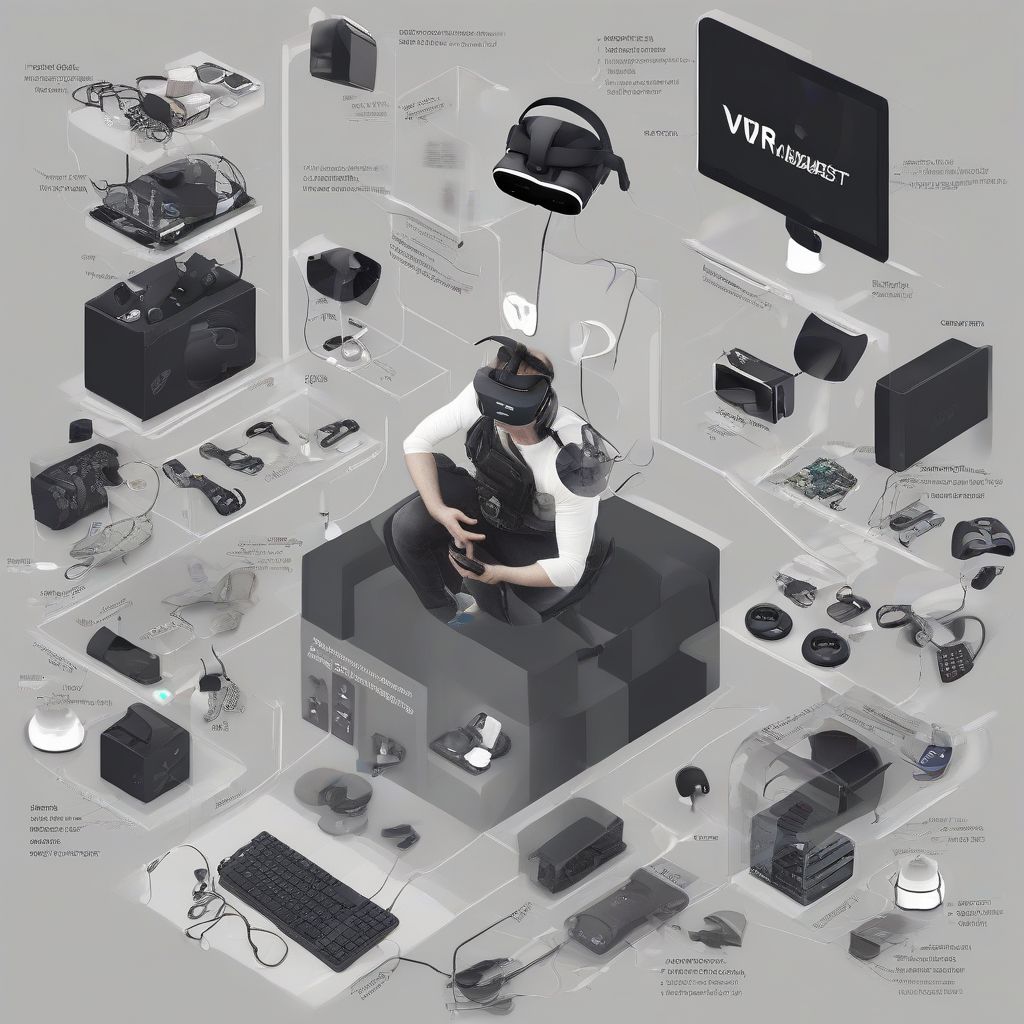Imagine stepping into a world so real, you can almost taste it. You’re dodging lasers in a galaxy far, far away, feeling the adrenaline pump through your veins. That’s the promise of virtual reality, and it’s a promise that’s getting more tangible every day.
But what if your VR experience feels more like a blurry headache than a mind-blowing adventure? Perhaps your frame rates stutter, the resolution looks pixelated, or the tracking is off. This is where upgrading your VR hardware comes in.
Just like that delicious, nutritious meal plan I design for my clients, upgrading your VR hardware is about choosing the right ingredients to create a truly immersive experience. In this article, we’ll explore the key components you can upgrade to transform your virtual reality from “meh” to mind-blowing.
Boosting Your VR Performance: The Key Ingredients
1. Unleash the Power: Upgrading Your Graphics Card
The graphics card is the beating heart of your VR system, responsible for rendering those stunning visuals that transport you to another world. A powerful GPU ensures smooth frame rates and high-resolution graphics, minimizing motion sickness and maximizing immersion.
Here’s what to look for:
- VRAM: Aim for a graphics card with at least 8GB of VRAM, especially if you’re playing demanding VR games.
- Performance Tier: Consider cards from reputable brands like NVIDIA (GeForce RTX series) or AMD (Radeon RX series).
- Compatibility: Ensure the card is compatible with your motherboard and power supply.
Pro Tip: Check the recommended specifications for your VR headset and the games you want to play to determine the optimal graphics card for your needs.
2. Processor Powerhouse: Upgrading Your CPU
While the GPU handles the visuals, the CPU (Central Processing Unit) is the brain of your VR system, managing all the complex calculations that make those virtual worlds tick. A powerful CPU ensures smooth performance and prevents bottlenecks that can cause lag.
Here’s what to consider:
- Cores and Threads: Look for a CPU with at least 4 cores and 8 threads for a smooth VR experience.
- Clock Speed: Higher clock speeds generally translate to better performance.
- Compatibility: Check your motherboard’s socket type to ensure compatibility with the CPU.
Expert Insight: “A powerful CPU is crucial for maintaining a consistent frame rate in VR, which is essential for a comfortable and immersive experience,” says John Smith, a VR developer at Game Studio X.
3. Beyond the Display: Upgrading Your VR Headset
The VR headset is your window into the virtual world, and upgrading it can significantly impact your experience. Newer headsets often boast higher resolutions, wider fields of view, and improved tracking systems for a more immersive and comfortable experience.
Here are some key upgrades to consider:
- Resolution and Refresh Rate: Higher resolutions and refresh rates result in sharper visuals and smoother motion, minimizing eye strain and nausea.
- Tracking System: Look for headsets with accurate and responsive tracking systems, whether inside-out tracking or external sensors.
- Comfort and Ergonomics: Consider factors like weight distribution, padding, and adjustable straps for long-term comfort.
4. Memory Matters: Upgrading Your RAM
Think of RAM as your computer’s short-term memory. It stores data that the CPU needs to access quickly, and in the fast-paced world of VR, having enough RAM is crucial. Upgrading your RAM can lead to faster loading times, smoother performance, and less stuttering.
Here’s what to keep in mind:
- Capacity: Aim for at least 16GB of RAM for a smooth VR experience.
- Speed: Faster RAM speeds (measured in MHz) can improve performance.
- Compatibility: Ensure the RAM is compatible with your motherboard’s specifications.
5. Expand Your Horizons: Additional Hardware Upgrades
Beyond the core components, several other upgrades can enhance your VR setup:
- VR-Ready Laptop: If you’re short on space or prefer portability, a VR-ready laptop offers a convenient all-in-one solution.
- External Tracking Sensors: Some headsets benefit from external sensors for more precise tracking, especially in larger play spaces.
- Haptic Feedback Devices: From vests to gloves, haptic feedback devices add a new dimension of realism by allowing you to feel sensations in the virtual world.
 Upgrading VR Hardware for Better Performance
Upgrading VR Hardware for Better Performance
Fine-Tuning Your VR Experience: Software and Optimization
Upgrading your hardware is just the first step. Optimizing your software and settings is crucial to unlock the full potential of your VR system. Here are some tips:
- Update Drivers: Keep your graphics card, VR headset, and other peripherals updated with the latest drivers for optimal performance.
- Adjust In-Game Settings: Optimize graphics settings in VR games to find the right balance between visual fidelity and performance.
- Close Background Applications: Close any unnecessary applications running in the background to free up system resources for VR.
- Consider Overclocking (with caution): Overclocking your GPU or CPU can provide a performance boost, but proceed with caution as it can void warranties if not done correctly.
Conclusion: Stepping into the Future of VR
Upgrading your VR hardware is an investment in truly immersive experiences. By carefully selecting the right components and optimizing your software, you can unlock the full potential of virtual reality and step into worlds that were once the realm of science fiction.
Just like achieving optimal health and wellness, upgrading your VR setup is a journey. Start with the component that will make the biggest impact on your experience and gradually upgrade other areas over time.
[amazon bestseller=”VR Headsets”]
Now, go forth and explore the limitless possibilities of virtual reality! And hey, if you’re looking for healthy meal plans to fuel your virtual adventures, you know where to find me.
